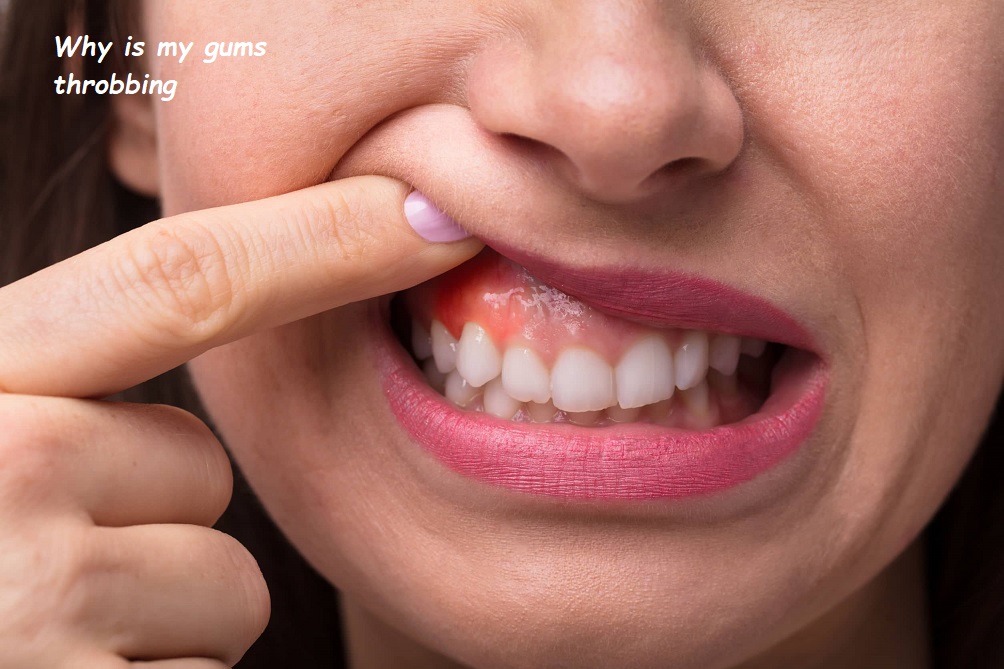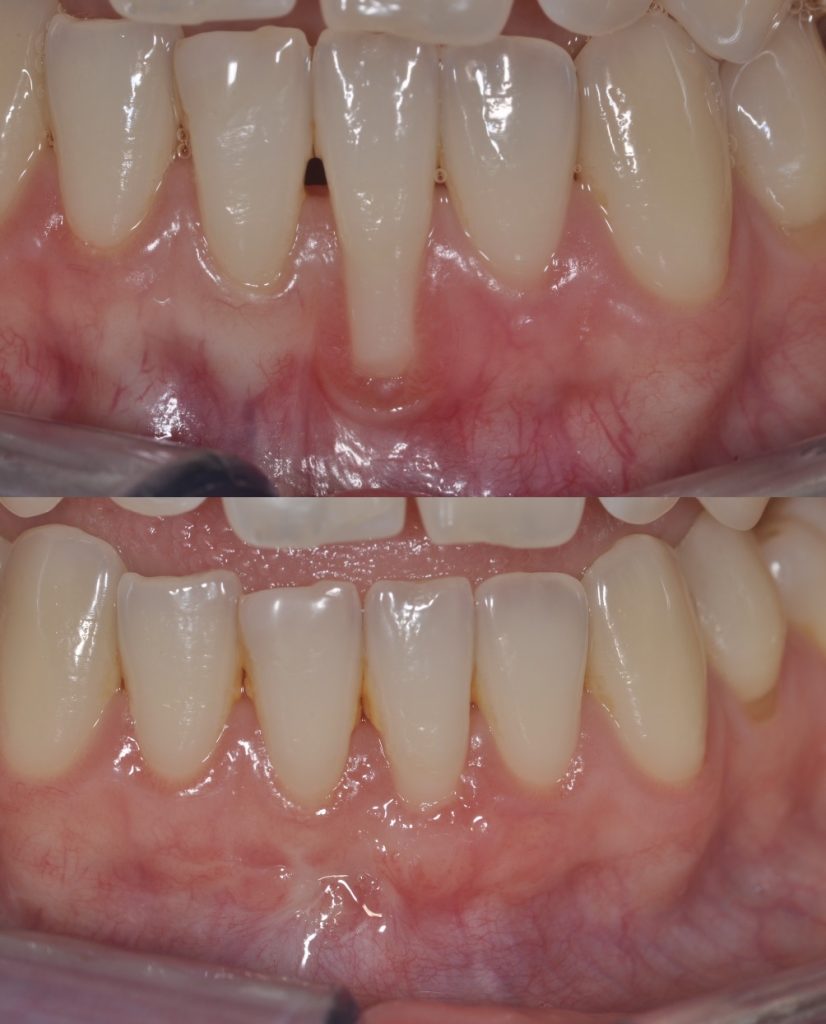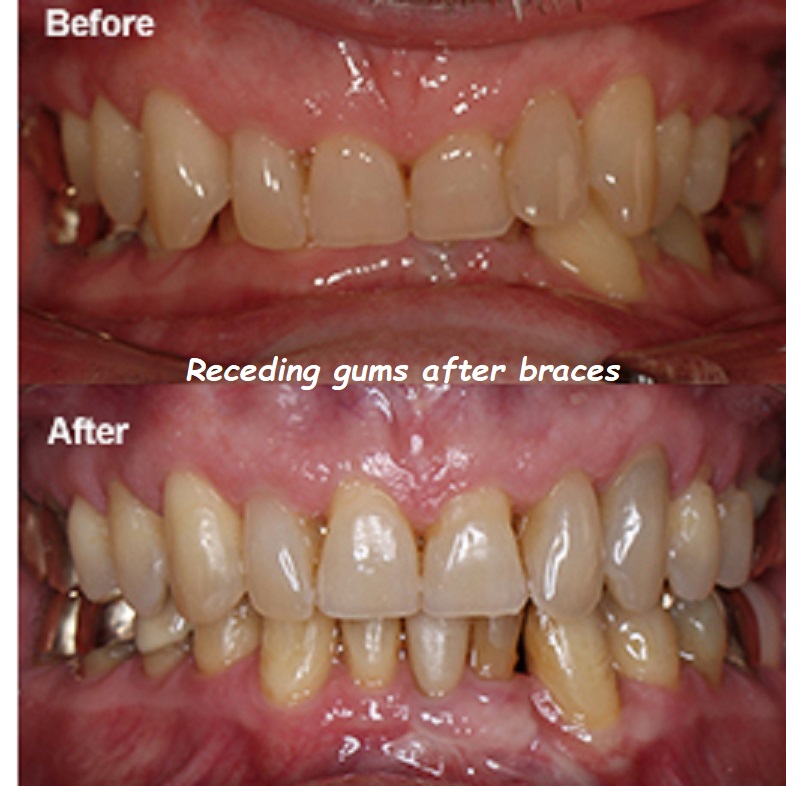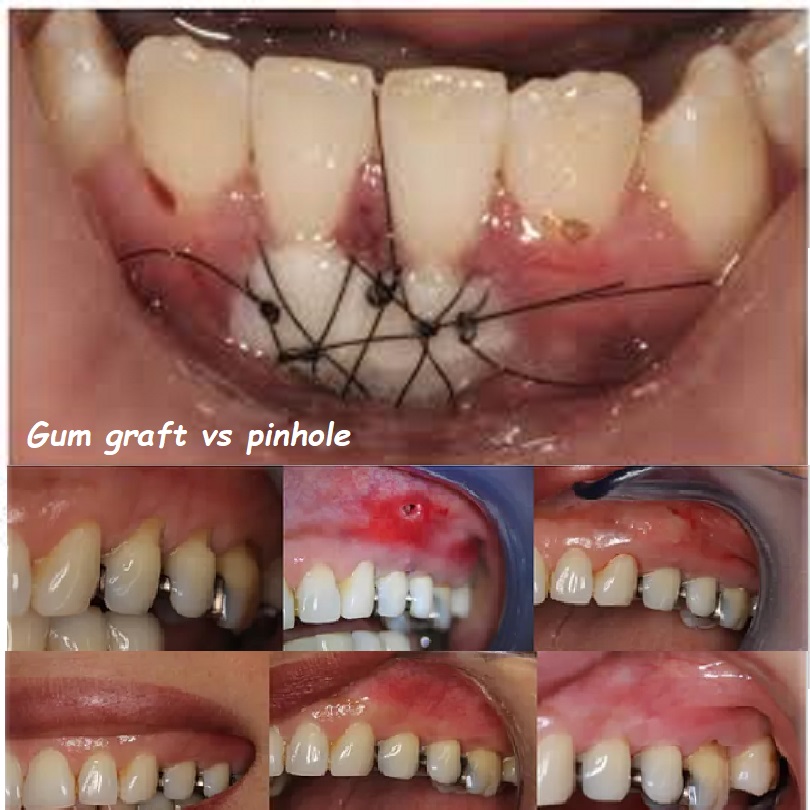white gums
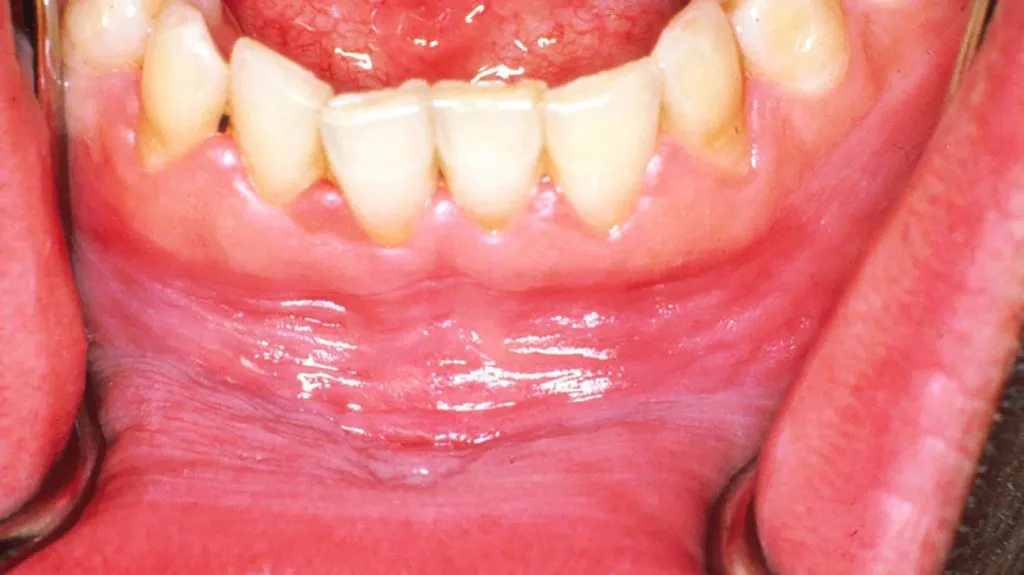
Understanding White Gums: Causes, Symptoms, and Treatments
Oral health is a vital component of overall health, influencing various aspects of well-being. One particular concern in oral health is the condition known as white gums. The appearance of white gums can be alarming, but understanding the underlying causes, symptoms, and treatments can help manage and prevent this condition effectively.
What Are White Gums?
White gums refer to a condition where the gum tissue, which is typically pink, turns white or pale. This change in color can be localized to specific areas or affect the entire gum line. White gums can be a symptom of various underlying health issues, ranging from minor irritations to more serious conditions.
Common Causes of White Gums
- Gingivitis and Periodontitis:
- Gingivitis is an inflammation of the gums caused by plaque buildup. If left untreated, it can progress to periodontitis, a more severe form of gum disease that can cause the gums to appear white due to tissue damage and infection.
- Oral Thrush:
- Oral thrush is a fungal infection caused by the Candida fungus. It often presents as white patches on the gums, tongue, and inner cheeks. It is more common in individuals with weakened immune systems, those taking certain medications, or individuals with conditions like diabetes.
- Leukoplakia:
- Leukoplakia is characterized by thick, white patches on the gums, tongue, and the inside of the cheeks. It can be caused by chronic irritation from tobacco use, alcohol consumption, or ill-fitting dentures. While leukoplakia itself is not cancerous, it can sometimes be precancerous.
- Anemia:
- Anemia, a condition characterized by a lack of healthy red blood cells, can cause the gums to appear pale or white. This occurs because anemia reduces the oxygen-carrying capacity of the blood, leading to less oxygenated blood reaching the gum tissues.
- Vitamin Deficiencies:
- Deficiencies in vitamins, particularly vitamin B12 and iron, can cause changes in gum color. These vitamins are crucial for maintaining healthy red blood cells and gum tissue.
- Oral Lichen Planus:
- Oral lichen planus is a chronic inflammatory condition that affects the mucous membranes inside the mouth. It can cause white, lacy patches on the gums, along with painful sores.
- Smoking and Tobacco Use:
- Smoking and the use of tobacco products can lead to white gums due to reduced blood flow and irritation of the gum tissues.

Symptoms Associated with White Gums
The symptoms accompanying white gums can vary depending on the underlying cause. Some common symptoms include:
- Swelling and Redness:
- In cases of gingivitis and periodontitis, the gums may be swollen and red in addition to appearing white.
- Bleeding Gums:
- Gums that bleed easily, especially during brushing or flossing, can indicate gum disease or other infections.
- Pain and Discomfort:
- Oral thrush, leukoplakia, and oral lichen planus can cause pain or a burning sensation in the mouth.
- Bad Breath:
- Persistent bad breath can be a sign of gum disease or oral thrush.
- Sores or Ulcers:
- Conditions like oral lichen planus can cause painful sores or ulcers in the mouth.
- Loose Teeth:
- Advanced gum disease can lead to loosening of the teeth.
Diagnosing White Gums
If you notice that your gums have turned white, it is essential to seek professional dental care to determine the underlying cause. A dentist will perform a thorough examination, which may include:
- Medical and Dental History:
- The dentist will review your medical and dental history to identify any pre-existing conditions or risk factors.
- Visual Examination:
- A visual examination of the mouth will help identify the presence of white patches, swelling, sores, or other abnormalities.
- X-rays:
- Dental X-rays can help assess the health of the underlying bone structure and identify any signs of infection or damage.
- Biopsy:
- In some cases, a biopsy may be necessary to rule out precancerous or cancerous conditions. A small sample of the affected tissue is taken and examined under a microscope.
- Blood Tests:
- Blood tests can help identify systemic conditions like anemia or vitamin deficiencies that may be contributing to the appearance of white gums.

Treatments for White Gums
The treatment for white gums depends on the underlying cause. Here are some common treatments based on different conditions:
- Gingivitis and Periodontitis:
- Professional dental cleaning to remove plaque and tartar.
- Improved oral hygiene practices, including regular brushing and flossing.
- Antibacterial mouth rinses or topical antibiotics.
- In severe cases, surgical intervention may be required.
- Oral Thrush:
- Antifungal medications, such as nystatin or fluconazole, to eliminate the fungal infection.
- Good oral hygiene practices to prevent recurrence.
- Addressing underlying conditions that may predispose to fungal infections.
- Leukoplakia:
- Removal of the source of irritation, such as quitting smoking or adjusting ill-fitting dentures.
- Regular monitoring to detect any changes in the patches.
- In some cases, surgical removal of the patches may be necessary.
- Anemia:
- Treating the underlying cause of anemia, such as iron or vitamin B12 supplementation.
- Dietary changes to include more iron-rich and vitamin-rich foods.
- Vitamin Deficiencies:
- Nutritional supplements to address deficiencies.
- Dietary adjustments to ensure adequate intake of essential vitamins and minerals.
- Oral Lichen Planus:
- Topical corticosteroids to reduce inflammation and pain.
- Oral medications in severe cases.
- Regular monitoring and management of symptoms.
- Smoking and Tobacco Use:
- Quitting smoking and avoiding tobacco products.
- Professional dental cleaning and monitoring for any changes.

Preventing White Gums
Prevention is key to maintaining healthy gums and preventing the appearance of white gums. Here are some preventive measures:
- Good Oral Hygiene:
- Brush your teeth at least twice a day with fluoride toothpaste.
- Floss daily to remove plaque and food particles from between your teeth.
- Use an antibacterial mouthwash to reduce plaque and prevent gum disease.
- Regular Dental Check-ups:
- Visit your dentist regularly for professional cleanings and check-ups. Early detection of gum problems can prevent more serious conditions.
- Healthy Diet:
- Eat a balanced diet rich in vitamins and minerals, particularly vitamin C, vitamin B12, and iron. These nutrients are essential for maintaining healthy gums and overall oral health.
- Avoid Tobacco Products:
- Avoid smoking and the use of other tobacco products. Tobacco use is a significant risk factor for gum disease and oral cancer.
- Manage Underlying Health Conditions:
- If you have conditions like diabetes or immune system disorders, work with your healthcare provider to manage them effectively. Poorly controlled health conditions can increase the risk of gum problems.
- Stay Hydrated:
- Drink plenty of water to keep your mouth hydrated. A dry mouth can contribute to gum problems and increase the risk of infections.
The Psychological Impact of White Gums
The appearance of white gums can have a significant psychological impact on individuals. Oral health is closely linked to self-esteem and confidence, and any noticeable changes can cause concern. Understanding that white gums are often a symptom of an underlying condition and not a disease itself can alleviate some anxiety. Seeking professional advice and adhering to prescribed treatments can help manage the condition effectively, restoring both oral health and confidence.
When to Seek Medical Advice
It is essential to seek medical advice if you notice any changes in your gum color, especially if they are persistent or accompanied by other symptoms like pain, swelling, or bleeding. Early diagnosis and treatment can prevent the progression of potential underlying conditions and maintain oral health. Do not ignore changes in your gums, as they can be indicative of more serious health issues that require prompt attention.
Conclusion
White gums can be a symptom of various underlying conditions, ranging from minor irritations to serious health issues. Understanding the potential causes, recognizing the symptoms, and seeking professional advice are crucial steps in managing and preventing this condition. By maintaining good oral hygiene, regular dental check-ups, and a healthy lifestyle, you can significantly reduce the risk of developing white gums and ensure overall oral health. Remember, a healthy mouth contributes to a healthy body, so prioritize your oral health for a better quality of life.

What does it mean if your gums are white?
White gums can indicate a variety of health issues, ranging from minor to serious conditions. Here are some common causes:
- Oral Thrush: This is a fungal infection caused by Candida that results in white patches on the gums, tongue, and inner cheeks.
- Leukoplakia: A condition characterized by thickened, white patches on the gums, inner cheeks, tongue, or roof of the mouth. It can be benign but sometimes is precancerous.
- Anemia: A reduction in red blood cells can cause pale or white gums due to decreased blood flow.
- Lichen Planus: An inflammatory condition that can cause white lacy patches or sores on the gums and other areas of the mouth.
- Gum Disease: Advanced gum disease or periodontitis can lead to changes in gum color, including white or pale gums due to tissue loss.
- Chemical Burns: Exposure to harsh chemicals, such as those found in some whitening products, can cause white patches or sores on the gums.
Do white gums mean dehydration?
White gums are not typically a direct sign of dehydration. Dehydration more commonly causes symptoms like dry mouth, cracked lips, and a sticky feeling in the mouth due to reduced saliva production. However, severe dehydration can lead to reduced blood flow and pale skin or gums indirectly. If dehydration is severe, it’s crucial to seek medical attention immediately.
What color are unhealthy gums?
Unhealthy gums can appear in various colors, each indicating different potential issues:
- Red or Swollen: Often a sign of gingivitis or early gum disease, indicating inflammation and possible infection.
- Dark Red or Purple: Advanced gum disease or periodontitis can cause gums to become dark red or purple due to prolonged inflammation and tissue damage.
- White or Pale: As mentioned, white or pale gums can indicate infections like thrush, anemia, or other systemic conditions affecting blood flow and health.
- Blue or Grey: This can indicate a lack of oxygenated blood flow, potentially due to serious health issues like cyanosis or advanced gum disease.
Do healing gums turn white?
Healing gums may turn white temporarily due to the formation of new tissue and the body’s response to the healing process. This is common after dental procedures like scaling and root planing, extractions, or periodontal surgery. The white appearance is typically a sign of the initial stages of healing and should resolve as the gums continue to heal. If the whiteness persists or is accompanied by pain or other symptoms, it’s important to consult a dentist.
How can I reduce white gums?
Reducing white gums depends on the underlying cause:
- Oral Hygiene: Maintain good oral hygiene by brushing twice a day, flossing daily, and using an antiseptic mouthwash to prevent infections.
- Diet: Ensure a balanced diet rich in vitamins and minerals to support overall gum health.
- Hydration: Stay well-hydrated to support saliva production and overall oral health.
- Avoid Irritants: Avoid smoking and excessive use of alcohol or abrasive dental products that can irritate the gums.
- Medical Treatment: Seek treatment for underlying conditions like oral thrush, anemia, or lichen planus. This may include antifungal medications, supplements, or other prescribed treatments.
- Regular Dental Visits: Regular check-ups with a dentist can help diagnose and treat any gum issues early.
How to whiten gums?
Whitening gums themselves is not generally recommended or necessary, as healthy gums should be naturally pink. However, maintaining overall gum health can improve their appearance:
- Oral Hygiene: Regular brushing, flossing, and using an antiseptic mouthwash help keep gums healthy.
- Professional Cleaning: Regular dental cleanings can remove plaque and tartar that contribute to gum discoloration.
- Healthy Diet: A diet rich in fruits, vegetables, and lean proteins supports overall oral health.
- Avoid Irritants: Reducing or quitting smoking and limiting alcohol intake can prevent gum discoloration.
- Dental Treatments: For specific conditions like melanin pigmentation or other discolorations, a dentist may offer treatments such as laser therapy.
Can white gums turn pink again?
Yes, white gums can turn pink again with appropriate treatment and care. The ability to restore healthy pink gums depends on the underlying cause:
- Treat Infections: Addressing infections like oral thrush with antifungal medications can help gums return to their natural color.
- Improve Oral Hygiene: Consistent and proper oral care can reduce inflammation and improve gum color.
- Treat Underlying Conditions: Managing systemic conditions like anemia with appropriate treatments and dietary changes can help restore natural gum color.
- Professional Care: Regular dental visits for cleanings and check-ups can help maintain healthy gums.
Can anemia cause white gums?
Yes, anemia can cause white or pale gums. Anemia is a condition characterized by a deficiency of red blood cells or hemoglobin, leading to reduced oxygen flow to tissues. This can cause gums, as well as other mucous membranes and skin, to appear pale or white. Treating anemia with iron supplements, dietary changes, or other medical treatments can help improve gum color and overall health.
What do weak gums look like?
Weak gums can exhibit several signs that indicate underlying issues:
- Recession: Gums that are receding or pulling away from the teeth, exposing more of the tooth or even the roots.
- Swelling and Redness: Inflamed, red, or swollen gums that are easily irritated.
- Bleeding: Gums that bleed easily during brushing, flossing, or eating hard foods.
- Tenderness: Gums that are tender or painful to the touch.
- Loose Teeth: Teeth that feel loose due to weakened or receding gums.
- Pus or Discharge: Signs of infection, such as pus or discharge around the gum line.
- Discoloration: Gums that appear white, pale, dark red, or purple, indicating potential health issues.
If you notice any of these signs, it’s important to seek dental care to address the underlying causes and prevent further damage to your gums and teeth. Regular dental check-ups, proper oral hygiene, and a healthy lifestyle can help maintain strong and healthy gums.
Are white gums OK?
White gums are generally not considered normal and often indicate an underlying issue that requires attention. While some temporary whiteness may occur due to minor irritation or healing after dental procedures, persistent white gums can signal more serious conditions such as:
- Oral Thrush: A fungal infection that appears as white patches on the gums, tongue, and inner cheeks.
- Leukoplakia: Thickened, white patches that can be benign but may also be precancerous.
- Gum Disease: Advanced stages of gum disease or periodontitis can lead to changes in gum color, including white or pale gums.
- Anemia: Reduced red blood cell count can cause gums to appear pale or white.
- Lichen Planus: An inflammatory condition causing white lacy patches on the gums and other areas of the mouth.
- Chemical Burns: Exposure to harsh chemicals, such as certain dental products, can cause white patches or sores.
If you notice persistent white gums, it’s important to consult a dentist or healthcare professional for a proper diagnosis and treatment plan.
How long do white gums last?
The duration of white gums depends on the underlying cause:
- Oral Thrush: With proper antifungal treatment, symptoms typically improve within a few days to two weeks.
- Healing After Procedures: White gums resulting from minor irritation or healing after dental procedures usually resolve within a few days to a week.
- Leukoplakia or Lichen Planus: These conditions can persist for weeks, months, or even longer and may require ongoing monitoring and treatment.
- Anemia: Once the underlying cause of anemia is addressed (through diet, supplements, or medical treatment), gums should gradually return to their normal color over a few weeks.
Why did my gum just turn white?
Gums can turn white due to various reasons, including:
- Irritation or Trauma: Mechanical irritation from braces, dentures, or aggressive brushing can cause localized whitening.
- Infections: Fungal infections like oral thrush can cause white patches.
- Chemical Exposure: Exposure to certain chemicals, such as teeth whitening products or mouthwashes, can cause chemical burns resulting in white gums.
- Healing Process: After dental procedures, gums may temporarily turn white as part of the healing process.
- Systemic Conditions: Conditions like anemia can cause a general pallor, including white or pale gums.
How to cure gum disease without a dentist?
While professional dental care is crucial for effectively treating gum disease, here are some steps you can take at home to manage mild gum disease:
- Improved Oral Hygiene: Brush your teeth at least twice a day with a soft-bristled toothbrush and fluoride toothpaste. Floss daily to remove plaque between teeth.
- Antiseptic Mouthwash: Use an over-the-counter antiseptic mouthwash to reduce bacteria and inflammation.
- Healthy Diet: Eat a balanced diet rich in vitamins and minerals, particularly vitamin C and calcium, which are important for gum health.
- Avoid Tobacco: Quit smoking and avoid tobacco products, which can exacerbate gum disease.
- Stay Hydrated: Drink plenty of water to maintain saliva flow and wash away food particles and bacteria.
- Warm Salt Water Rinse: Rinse your mouth with a warm salt water solution to reduce inflammation and soothe gums.
For moderate to severe gum disease, professional intervention is necessary. Home care alone cannot substitute for the cleaning and treatment provided by a dentist.
Why is my gum white in one spot?
A white spot on your gum can be caused by several conditions, including:
- Canker Sores: Small, painful ulcers that appear on the gums and other parts of the mouth.
- Oral Thrush: A fungal infection that can cause localized white patches.
- Leukoplakia: Thickened white patches that can appear anywhere in the mouth, including the gums.
- Irritation or Trauma: Localized irritation from dental appliances, aggressive brushing, or accidental bites can cause white spots.
- Lichen Planus: An inflammatory condition that can cause white lacy patches on the gums.
What do normal gums look like?
Healthy gums typically have the following characteristics:
- Color: Pink in color, though the exact shade can vary depending on your natural skin tone.
- Texture: Firm and resilient to the touch, with a stippled texture similar to the surface of an orange peel.
- Contour: Gums should snugly fit around each tooth and form a scalloped edge.
- No Bleeding: Healthy gums do not bleed during brushing or flossing.
- No Pain or Discomfort: There should be no pain or tenderness in healthy gums.
By maintaining good oral hygiene practices and regularly visiting your dentist, you can help ensure that your gums remain healthy and free of disease.


